5 G KILLERS STRANGER THN FICTION NEWS
LOOKING AT THE WEAPONS THAT ARE EVERYWHERE NOW AND THEY ARE CAUSING BAD BAD SHIT AND WE CANNOT SEE THIS POISON ITS THE PERFECT SILENT WEAPON FOR QUIET WARS ACT PORTRAYED UPON US BY THE VATICAN OWNED QUEEN DRAG, E LIZARD BETH TOP SECRET
Silent weapons for quiet wars
Operations Research Technical Manual
TW-SW7905.1
Welcome Aboard
This publication marks the 25th anniversary of the Third World War, called the "Quiet
War", being conducted using subjective biological warfare, fought with "silent weapons".
This book contains an introductory description of this war, its strategies, and its
weaponry.
May 1979 #74-1120
Security
It is patently impossible to discuss social engineering or the automation of a society, i.e.,
the engineering of social automation systems (silent weapons) on a national or worldwide
scale without implying extensive objectives of social control and destruction of human
life, i.e., slavery and genocide.
This manual is in itself an analog declaration of intent. Such a writing must be secured
from public scrutiny. Otherwise, it might be recognized as a technically formal
declaration of domestic war. Furthermore, whenever any person or group of persons in a
position of great power and without full knowledge and consent of the public, uses such
knowledge and methodologies for economic conquest - it must be understood that a state
of domestic warfare exists between said person or group of persons and the public.
The solution of today's problems requires an approach which is ruthlessly candid, with no
agonizing over religious, moral or cultural values.
You have qualified for this project because of your ability to look at human society with
cold objectivity, and yet analyze and discuss your observations and conclusions with
others of similar intellectual capacity without the loss of discretion or humility. Such
virtues are exercised in your own best interest. Do not deviate from them.
Historical Introduction
Silent weapon technology has evolved from Operations Research (O.R.), a strategic and
tactical methodology developed under the Military Management in England during
PAGE 04
Silent Weapons for Quiet Wars
World War II. The original purpose of Operations Research was to study the strategic and
tactical problems of air and land defense with the objective of effective use of limited
military resources against foreign enemies (i.e., logistics).
It was soon recognized by those in positions of power that the same methods might be
useful for totally controlling a society. But better tools were necessary.
Social engineering (the analysis and automation of a society) requires the correlation of
great amounts of constantly changing economic information (data), so a high-speed
computerized data-processing system was necessary which could race ahead of the
society and predict when society would arrive for capitulation.
Relay computers were to slow, but the electronic computer, invented in 1946 by J.
Presper Eckert and John W. Mauchly, filled the bill.
The next breakthrough was the development of the simplex method of linear
programming in 1947 by the mathematician George B. Dantzig.
Then in 1948, the transistor, invented by J. Bardeen, W.H. Brattain, and W. Shockley,
promised great expansion of the computer field by reducing space and power
requirements.
With these three inventions under their direction, those in positions of power strongly
suspected that it was possible for them to control the whole world with the push of a
button.
Immediately, the Rockefeller Foundation got in on the ground floor by making a fouryear grant to Harvard College, funding the Harvard Economic Research Project for the
study of the structure of the American Economy.i
One year later, in 1949, The United
States Air Force joined in.
In 1952 the grant period terminated, and a high-level meeting of the Elite was held to
determine the next phase of social operations research. The Harvard project had been
very fruitful, as is borne out by the publication of some of its results in 1953 suggesting
the feasibility of economic (social) engineering.
Engineered in the last half of the decade of the 1940's, the new Quiet War machine stood,
so to speak, in sparkling gold-plated hardware on the showroom floor by 1954.
With the creation of the maser in 1954, the promise of unlocking unlimited sources of
fusion atomic energy from the heavy hydrogen in sea water and the consequent
availability of unlimited social power was a possibility only decades away.
The combination was irresistible.
PAGE 05
Silent Weapons for Quiet Wars
Although the silent weapons system was nearly exposed 13 years later, the evolution of
the new weapon-system has never suffered any major setbacks.
This volume marks the 25th anniversary of the beginning of the Quiet War. Already this
domestic war has had many victories on many fronts throughout the world.
Political Introduction
In 1954 it was well recognized by those in positions of authority that it was only a matter
of time, only a few decades, before the general public would be able to grasp and upset
the cradle of power, for the very elements of the new silent-weapon technology were as
accessible for a public utopia as they were for providing a private utopia.
The issue of primary concern that of dominance, revolved around the subject of the
energy sciences.
Energy
Energy is recognized as the key to all activity on earth. Natural science is the study of the
sources and control of natural energy, and social science, theoretically expressed as
economics, is the study of the sources and control of social energy. Both are bookkeeping
systems: mathematics. Therefore, mathematics is the primary energy science. And the
bookkeeper can be king if the public can be kept ignorant of the methodology of the
bookkeeping.
All science is merely a means to an end. The means is knowledge. The end is control.
Beyond this remains only one issue: Who will be the beneficiary?
In 1954 this was the issue of primary concern. Although the so-called "moral issues"
were raised, in view of the law of natural selection [1
] it was agreed that a nation or world
of people who will not use their intelligence are no better than animals who do not have
intelligence. Such people are beasts of burden and steaks on the table by choice and
consent.
Consequently, in the interest of future world order, peace, and tranquility, it was decided
to privately wage a quiet war against the American public with an ultimate objective of
permanently shifting the natural and social energy (wealth) of the undisciplined and
irresponsible many into the hands of the self-disciplined, responsible, and worthy few.
In order to implement this objective, it was necessary to create, secure, and apply new
weapons which, as it turned out, were a class of weapons so subtle and sophisticated in
their principle of operation and public appearance as to earn for themselves the name
"silent weapons".
[
1
This concept was never more than a questionable theory of elitist Charles Darwin]
PAGE 06
Silent Weapons for Quiet Wars
In conclusion, the objective of economic research, as conducted by the magnates of
capital (banking) and the industries of commodities (goods) and services, is the
establishment of an economy which is totally predictable and manipulatable.
In order to achieve a totally predictable economy, the low-class elements of society must
be brought under total control, i.e., must be housebroken, trained, and assigned a yoke
and long-term social duties from a very early age, before they have an opportunity to
question the propriety of the matter. In order to achieve such conformity, the lower-class
family unit must be disintegrated by a process of increasing preoccupation of the parents
and the establishment of government-operated day-care centers for the occupationally
orphaned children.
The quality of education given to the lower class must be of the poorest sort, so that the
moat of ignorance isolating the inferior class from the superior class is and remains
incomprehensible to the inferior class. With such an initial handicap, even bright lower
class individuals have little if any hope of extricating themselves from their assigned lot
in life. This form of slavery is essential to maintain some measure of social order, peace,
and tranquility for the ruling upper class.
Descriptive Introduction of the Silent Weapon
Everything that is expected from an ordinary weapon is expected from a silent weapon by
its creators, but only in its own manner of functioning.
It shoots situations, instead of bullets; propelled by data processing, instead of chemical
reaction (explosion); originating from bits of data, instead of grains of gunpowder; from a
computer, instead of a gun; operated by a computer programmer, instead of a marksman;
under the orders of a banking magnate, instead of a military general.
It makes no obvious explosive noises, causes no obvious physical or mental injuries, and
does not obviously interfere with anyone's daily social life.
Yet it makes an unmistakable "noise," causes unmistakable physical and mental damage,
and unmistakably interferes with the daily social life, i.e., unmistakable to a trained
observer, one who knows what to look for.
The public cannot comprehend this weapon, and therefore cannot believe that they are
being attacked and subdued by a weapon.
The public might instinctively feel that something is wrong, but that is because of the
technical nature of the silent weapon, they cannot express their feeling in a rational way,
or handle the problem with intelligence. Therefore, they do not know how to cry for help,
and do not know how to associate with others to defend themselves against it.
PAGE 07
Silent Weapons for Quiet Wars
When a silent weapon is applied gradually, the public adjusts/adapts to its presence and
learns to tolerate its encroachment on their lives until the pressure (psychological via
economic) becomes too great and they crack up.
Therefore, the silent weapon is a type of biological warfare. It attacks the vitality,
options, and mobility of the individuals of a society by knowing, understanding,
manipulating, and attacking their sources of natural and social energy, and their physical,
mental, and emotional strengths and weaknesses.
Theoretical Introduction
Give me control over a nation's currency, and I care not who makes its laws.
-- Mayer Amshel Rothschild (1743-1812)
Today's silent weapons technology is an outgrowth of a simple idea discovered,
succinctly expressed, and effectively applied by the quoted Mr. Mayer Amschel
Rothschild. Mr. Rothschild discovered the missing passive component of economic
theory known as economic inductance. He, of course, did not think of his discovery in
these 20th-century terms, and, to be sure, mathematical analysis had to wait for the
Second Industrial Revolution, the rise of the theory of mechanics and electronics, and
finally, the invention of the electronic computer before it could be effectively applied in
the control of the world economy.
General Energy Concepts
In the study of energy systems, there always appears three elementary concepts. These
are potential energy, kinetic energy, and energy dissipation. And corresponding to these
concepts, there are three idealized, essentially pure physical counterparts called passive
components.
(1) In the science of physical mechanics, the phenomenon of potential energy is
associated with a physical property called elasticity or stiffness, and can be represented
by a stretched spring. In electronic science, potential energy is stored in a capacitor
instead of a spring. This property is called capacitance instead of elasticity or stiffness.
(2) In the science of physical mechanics, the phenomenon of kinetic energy is
associated with a physical property called inertia or mass, and can be represented by a
mass or a flywheel in motion.
In electronic science, kinetic energy is stored in an inductor (in a magnetic field)
instead of a mass. This property is called inductance instead of inertia.
PAGE 08
Silent Weapons for Quiet Wars
(3) In the science of physical mechanics, the phenomenon of energy dissipation is
associated with a physical property called friction or resistance, and can be represented
by a dashpot or other device which converts energy into heat. In electronic science,
dissipation of energy is performed by an element called either a resistor or a conductor,
the term "resistor" being the one generally used to describe a more ideal device (e.g.,
wire) employed to convey electronic energy efficie ntly from one location to another. The
property of a resistance or conductor is measured as either resistance or conductance
reciprocals.
In economics these three energy concepts are associated with:
1. Economic Capacitance - Capital (money, stock/inventory, investments in buildings
and durables, etc.)
2. Economic Conductance - Goods (production flow coefficients)
3. Economic Inductance - Services (the influence of the population of industry on
output)
All of the mathematical theory developed in the study of one energy system (e.g.,
mechanics, electronics, etc.) can be immediately applied in the study of any other energy
system (e.g., economics).
Mr. Rothschild's Energy Discovery
What Mr. Rothschild [2
] had discovered was the basic principle of power, influence, and
control over people as applied to economics. That principle is "when you assume the
appearance of power, people soon give it to you."
Mr. Rothschild had discovered that currency or deposit loan accounts had the required
appearance of power that could be used to induce people (inductance, with people
corresponding to a magnetic field) into surrendering their real wealth in exchange for a
promise of greater wealth (instead of real compensation). They would put up real
collateral in exchange for a loan of promissory notes. Mr. Rothschild found that he could
issue more notes than he had backing for, so long as he had someone's stock of gold as a
persuader to show his customers.
Mr. Rothschild loaned his promissory notes to individuals and to governments. These
would create overconfidence. Then he would make money scarce, tighten control of the
system, and collect the collateral through the obligation of contracts. The cycle was then
repeated. These pressures could be used to ignite a war. Then he would control the
availability of currency to determine who would win the war. That government which
agreed to give him control of its economic system got his support.
Collection of debts was guaranteed by economic aid to the enemy of the debtor. The
profit derived from this economic methodology made Mr. Rothschild all the more able to
expand his wealth. He found that the public greed would allow currency to be printed by
[
2
Read The Synagogue of Satan by Andrew Hitchcock to discover the truth about Mr. Rothschild.]
PAGE 09
Silent Weapons for Quiet Wars
government order beyond the limits (inflation) of backing in precious metal or the
production of goods and services.
Apparent Capital as "Paper" Inductor
In this structure, credit, presented as a pure element called "currency," has the appearance
of capital, but is in effect negative capital. Hence, it has the appearance of service, but is
in fact, indebtedness or debt. It is therefore an economic inductance instead of an
economic capacitance, and if balanced in no other way, will be balanced by the negation
of population (war, genocide). The total goods and services represent real capital called
the gross national product, and currency may be printed up to this level and still represent
economic capacitance; but currency printed beyond this level is subtractive, represents
the introduction of economic inductance, and constitutes notes of indebtedness.
War is therefore the balancing of the system by killing the true creditors (the public
which we have taught to exchange true value for inflated currency) and falling back on
whatever is left of the resources of nature and regeneration of those resources.
Mr. Rothschild had discovered that currency gave him the power to rearrange the
economic structure to his own advantage, to shift economic inductance to those economic
positions, which would encourage the greatest economic instability and oscillation.
The final key to economic control had to wait until there was sufficient data and highspeed computing equipment to keep close watch on the economic oscillations created by
price shocking and excess paper energy credits - paper inductance/inflation .
Breakthrough
The aviation field provided the greatest evolution in economic engineering by way of the
mathematical theory of shock testing. In this process, a projectile is fired from an
airframe on the ground and the impulse of the recoil is monitored by vibration
transducers connected to the airframe and wired to chart recorders.
By studying the echoes or reflections of the recoil impulse in the airframe, it is possible
to discover critical vibrations in the structure of the airframe which either vibrations of
the engine or aeolian vibrations of the wings, or a combination of the two, might
reinforce resulting in a resonant self-destruction of the airframe in flight as an aircraft.
From the standpoint of engineering, this means that the strengths and weaknesses of the
structure of the airframe in terms of vibrational energy can be discovered and
manipulated.
Application in Economics
To use this method of airframe shock testing in economic engineering, the prices of
commodities are shocked, and the public consumer reaction is monitored. The resulting
PAGE 10
Silent Weapons for Quiet Wars
echoes of the economic shock are interpreted theoretically by computers and the psychoeconomic structure of the economy is thus discovered. It is by this process that partial
differential and difference matrices are discovered that define the family household and
make possible its evaluation as an economic industry (dissipative consumer structure).
Then the response of the household to future shocks can be predicted and manipulated,
and society becomes a well-regulated animal with its reins under the control of a
sophisticated computer-regulated social energy bookkeeping system.
Eventually every individual element of the structure comes under computer control
through a knowledge of personal preferences, such knowledge guaranteed by computer
association of consumer preferences (universal product code, UPC; zebra-striped pricing
codes on packages) with identified consumers (identified via association with the use of a
credit card and later a permanent "tattooed" body number invisible under normal ambient
illumination).
Summary
Economics is only a social extension of a natural energy system. It, also, has its three
passive components. Because of the distribution of wealth and the lack of communication
and lack of data, this field has been the last energy field for which a knowledge of these
three passive components has been developed.
Since energy is the key to all activity on the face of the earth, it follows that in order to
attain a monopoly of energy, raw materials, goods, and services and to establish a world
system of slave labor, it is necessary to have a first strike capability in the field of
economics. In order to maintain our position, it is necessary that we have absolute first
knowledge of the science of control over all economic factors and the first experience at
engineering the world economy.
In order to achieve such sovereignty, we must at least achieve this one end: that the
public will not make either the logical or mathematical connection between economics
and the other energy sciences or learn to apply such knowledge.
This is becoming increasingly difficult to control because more and more businesses are
making demands upon their computer programmers to create and apply mathematical
models for the management of those businesses.
It is only a matter of time before the new breed of private programmer/economists will
catch on to the far-reaching implications of the work begun at Harvard in 1948. The
speed with which they can communicate their warning to the public will largely depend
upon how effective we have been at controlling the media, subverting education, and
keeping the public distracted with matters of no real importance.
The Economic Model
PAGE 11
Silent Weapons for Quiet Wars
Economics, as a social energy science has as a first objective the description of the
complex way in which any given unit of resources is used to satisfy some economic want.
(Leontief Matrix). This first objective, when it is extended to get the most product from
the least or limited resources, comprises that objective of general military and industrial
logistics known as Operations Research. (See simplex method of linear programming.)
The Harvard Economic Research Project (1948-) was an extension of World War II
Operations Research. Its purpose was to discover the science of controlling an economy:
at first the American economy, and then the world economy. It was felt that with
sufficient mathematical foundation and data, it would be nearly as easy to predict and
control the trend of an economy as to predict and control the trajectory of a projectile.
Such has proven to be the case. Moreover, the economy has been transformed into a
guided missile on target.
The immediate aim of the Harvard project was to discover the economic structure, what
forces change that structure, how the behavior of the structure can be predicted, and how
it can be manipulated. What was needed was a well-organized knowledge of the
mathematical structures and interrelationships of investment, production, distribution,
and consumption.
To make a short story of it all, it was discovered that an economy obeyed the same laws
as electricity and that all of the mathematical theory and practical and computer knowhow developed for the electronic field could be directly applied in the study of
economics. This discovery was not openly declared, and its more subtle implications
were and are kept a closely guarded secret, for example that in an economic model,
human life is measured in dollars, and that the electric spark generated when opening a
switch connected to an active inductor is mathematically analogous to the initiation of
war.
The greatest hurdle which theoretical economists faced was the accurate description of
the household as an industry. This is a challenge because consumer purchases are a
matter of choice which in turn is influenced by income, price, and other economic
factors.
This hurdle was cleared in an indirect and statistically approximate way by an application
of shock testing to determine the current characteristics, called current technical
coefficients, of a household industry
Finally, because problems in theoretical electronics can be translated very easily into
problems of theoretical electronics, and the solution translated back again, it follows that
only a book of language translation and concept definition needed to be written for
economics. The remainder could be gotten from standard works on mathematics and
electronics. This makes the publication of books on advanced economics unnecessary,
and greatly simplifies project security.
Industrial Diagrams
PAGE 12
Silent Weapons for Quiet Wars
An ideal industry is defined as a device which receives value from other industries in
several forms and converts them into one specific product for sales and distribution to
other industries. It has several inputs and one output. What the public normally thinks of
as one industry is really an industrial complex, where several industries under one roof
produce one or more products.
A pure (single output) industry can be represented oversimply by a circuit block as
follows:
The flow of product from industry #1 (supply) to industry #2 (demand) is denoted by
112. The total flow out of industry "K" is denoted by Ik (sales, etc.).
A three industry network can be diagrammed as follows:
A node is a symbol of collection and distribution of flow. Node #3 receives from industry
#3 and distributes to industries #1 and #3. If industry #3 manufactures chairs, then a flow
from industry #3 back to industry #3 simply indicates that industry #3 is using part of its
own output product, for example, as office furniture. Therefore the flow may be
summarized by the equations:
PAGE 13
Silent Weapons for Quiet Wars
Three Industrial Classes
Industries fall into three categories or classes by type of output:
Class #1 - Capital (resources)
Class #2 - Goods (commodities or use - dissipative)
Class #3 - Services (action of population
Class #1 industries exist at three levels:
(1) Nature - sources of energy and raw materials.
(2) Government - printing of currency equal to the gross national product (GNP), and
extension of currency in excess of GNP.
(3) Banking - loaning of money for interest, and extension (inflation/counterfeiting) of
economic value through the deposit loan accounts.
Class #2 industries exist as producers of tangible or consumer (dissipated) products. This
sort of activity is usually recognized and labeled by the public as "industry."
Class #3 industries are those which have service rather than a tangible product as their
output. These industries are called (1) households, and (2) governments. Their output is
human activity of a mechanical sort, and their basis is population.
Aggregation
The whole economic system can be represented by a three-industry model if one allows
the names of the outputs to be (1) capital, (2) goods, and (3) services. The problem with
this representation is that it would not show the influence, say, the textile industry on the
ferrous metal industry. This is because both the textile industry and the ferrous metal
industry would be contained within a single classification called the "goods industry" and
by this process of combining or aggregating these two industries under one system block
they would lose their economic individuality.
-
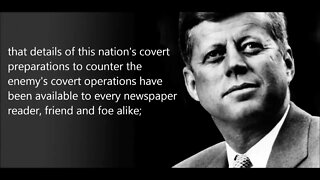 19:43
19:43
MortSahl
1 year agoJFK Secret Societies FULL Speech April 27, 1961 Addresses American Newspaper Publishers Association
3504 -
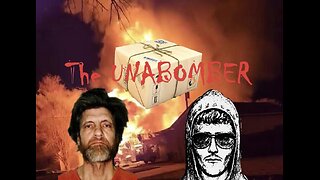 17:59
17:59
MonsterWatchTrueCrime
10 months agoSERIAL KILLER Ted Kaczynski #truecrime
316 -
 12:51
12:51
Chemical Trails
1 year agoCHEMTRAIL PILOT SPEAKS OUT ABOUT THE GENOCIDE GOING ON ABOVE US by wil paranormal
5.49K16 -
 3:38
3:38
HARPAXO
1 year ago"Psychopath 'Dr' Fauci murderer genocider killer" R. Kennedy Jnr.
1.48K7 -
 24:15
24:15
Jesus Christ reveals thru Gottfried Mayerhofer
1 year agoThe human Life... The Creator explains ❤️ Secrets of Life revealed thru Gottfried Mayerhofer
118 -
 0:51
0:51
HARPAXO
1 year agoKiller Zombies are coming, says Amazon
1.53K8 -
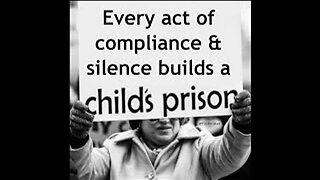 1:44:14
1:44:14
jess93
7 months agoLatest Update Dr Reiner Fuellmich ICIC Guest Dr Rima Laibow Exposed Why Monstrous Sexualization of Children and Colonization By Mind Control
303 -
 1:39:20
1:39:20
You need Information
10 months agoDouglas Dietrich The Truth is Stranger Than Fiction with Pete Wichert Thursday
36 -
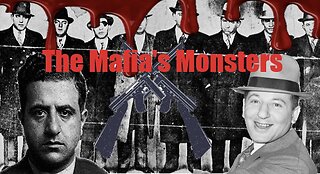 15:36
15:36
MisterDubya
7 months agoMurder Inc, a brief history and some notable crimes #truecrime
145 -
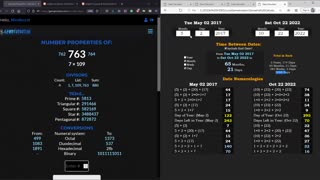 15:57
15:57
Mindbuzz
1 year agoI Discover Freemasons Planed Date to Kill Me in Relation to Family & Friend Murders / Eclipses
79